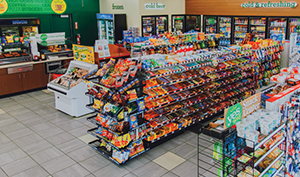 Consistent labor concerns play a role in how convenience store retailers approach many areas of their businesses, from operational considerations to recruitment and retention and more. In the “more” category, new store builds offer the chance to rethink, reflow and restructure ways to drive labor efficiencies. The labor consideration can apply to nearly every area of a store, from the checkout counter to flooring materials.
Consistent labor concerns play a role in how convenience store retailers approach many areas of their businesses, from operational considerations to recruitment and retention and more. In the “more” category, new store builds offer the chance to rethink, reflow and restructure ways to drive labor efficiencies. The labor consideration can apply to nearly every area of a store, from the checkout counter to flooring materials.
When building new TXB stores, CEO Kevin Smartt noted, “We always start first with the customer experience. Once we understand that journey, it’s almost like reengineering how we can gain efficiencies; we try not to let efficiencies cloud the customer experience.”
When we look at how we lay out new stores, we always look to make it even more efficient."
When it comes to new builds at Yesway, Derek Gaskins, chief marketing officer, said the chain works to trickle down any rethink that happens with a new build to benefit existing stores. “All brands have an affinity for new stores,” he said. “There’s a constant tug of ‘What’s different; What’s better?’ There is a natural balance to that to avoid a lot of one-offs.”
With more than 40 new stores opening last year from the ground up, Yesway took a hard look at how to minimize the footsteps an employee must take, said Gaskins. “We are always working to drive efficiency in store layout and design.”
The centralized main counter space—a 360-degree circular area in the center of the store—is a very deliberate approach to labor efficiency, enabling employees to be within arm’s reach of everything. Staff can reach for tobacco items and cook food all from one space. In new builds, the cashier’s space is actually double the size of what exists at Yesway’s legacy stores.
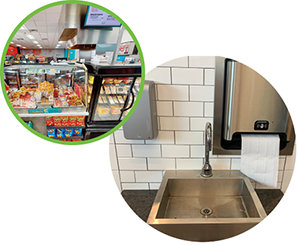 The philosophy builds around the idea of everyone being a team player. The integrated components at Yesway’s checkout support the principal of shared responsibilities for all categories. “There is no segmentation or separation of tasks,” Gaskins said. “We have designed operations to maximize labor efficiencies and do not have silos.”
The philosophy builds around the idea of everyone being a team player. The integrated components at Yesway’s checkout support the principal of shared responsibilities for all categories. “There is no segmentation or separation of tasks,” Gaskins said. “We have designed operations to maximize labor efficiencies and do not have silos.”
Gaskins understands the foodservice next-to-everything component reverses common c-store design trends, where the typical approach separates foodservice, with its dedicated labor and square footage, away from the main checkout. “Other chains certainly have a more complex model and likely higher labor costs. We are geared for speed,” he said. “Every brand has its own tenets.”
NEW-BUILD CONSIDERATIONS
With each new store comes a fresh opportunity to contemplate improvements. “The operations team is always learning, and we are building stores fast, so we do modify in real time. We absolutely evolve and adapt,” said Gaskins.
We have designed operations to maximize labor efficiencies and do not have silos."
In addition to expanding the checkout area, Gaskins said adaptions have included everything from changes to specific offerings to determining the best location for the ice machine. Considering the best flooring, for example, when working on a new build, offered the chance to find a product that will endure while being easier for staff to clean. The goal, Gaskins noted, is to avoid any special mops or equipment necessary for the floor to look its part—again placing the emphasis on efficiency improvements.
In bathrooms, new-build considerations include air machines to dry hands and anything that can make it easier and faster for employees to clean that space, Gaskins said.
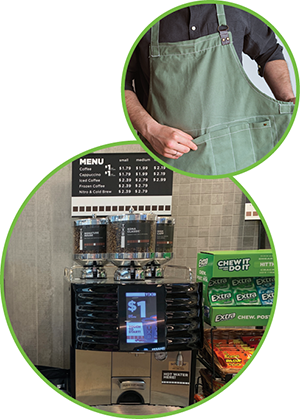 On the beverage program side, Yesway moved coffee brewers closer to the main cashier area. That eases the requirements of maintaining an all-day brewed coffee program, Gaskins said, allowing employees to better keep up with demand during peak periods. The chain relies on its bean-to-cup machines as its primary coffee offering during nonpeak periods.Efficiency drivers can be small things, but they add up. That is often the case with the tweaks that happen at TXB’s new-build stores. “It’s about making the employee’s life a little easier,” Smartt said.
On the beverage program side, Yesway moved coffee brewers closer to the main cashier area. That eases the requirements of maintaining an all-day brewed coffee program, Gaskins said, allowing employees to better keep up with demand during peak periods. The chain relies on its bean-to-cup machines as its primary coffee offering during nonpeak periods.Efficiency drivers can be small things, but they add up. That is often the case with the tweaks that happen at TXB’s new-build stores. “It’s about making the employee’s life a little easier,” Smartt said.
One example is TXB’s cold vault: Longer, deeper shelves in higher volume areas mean employees don’t have to restock as often, Smartt noted.
Additionally, gravity-fed shelving with microbeads in place keep product front-facing and pushed forward. “Product often got stuck with the old glides we used,” he said. “Keeping shelf facings front now is not an issue.” That also means the cold vault maintains its desired appearance with minimal employee requirements. Another merchandising/presentation-oriented change at newer stores, which saves time on restocking tasks, is to have more sleeves of cups throughout stores. Cups for both cold and hot beverages are now “everywhere,” said Smartt. “It’s technically more than we need, but it works because customers always have a cup available, and employees don’t have to worry about restocking during a rush.”
A change at newer TXB stores is to have more sleeves of cups available throughout stores."
The chain also tweaked the equipment used in its bean-to-cup coffee program ever so slightly. The brewed-on-demand system produces a coffee “puck” after customers brew an individual cup, which falls into a container that employees take out and empty after a certain number of cups are brewed. To eliminate the need for employees to empty the tray as often, the coffee pucks now drop through a tube that runs from the machine, under the counter and into a trash can. “We can produce coffee all through the rush now without having to empty the puck tray,” Smartt said.
Optimizing floor stock offers yet another way to drive efficiencies. “One key from a labor perspective is getting the right fixture configuration to optimize the set without overstocking,” said Geoff Wigner, director of sales for retail display manufacturer Nashville Display. The fixture design should marry in with the case pack, he explained, so it holds the correct amount of product for the sales cycle.
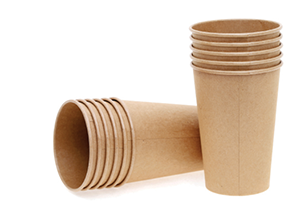 “It’s about space utilization in relation to sales,” Wigner said. Whatever the cycle from delivery to delivery is, that should factor into the fixture, he said.
“It’s about space utilization in relation to sales,” Wigner said. Whatever the cycle from delivery to delivery is, that should factor into the fixture, he said.
AI LABOR CUES
Smartt believes AI will continue to expand within convenience retailing. TXB uses AI in several stores now and plans to add it to new stores going forward, he said, in addition to adding it to high-volume stores when remodeling. The AI system uses TXB’s existing security camera setup and analyzes specific use cases, which enables a store manager to react in real time.
Efficiency drivers can be small things, but they add up."
It is less about data and more about action items, something Smartt said store managers report is more valuable to them. “The feedback we get from managers is, ‘We don’t need more data.’ What they told us they prefer is actionable information,” he said. “That’s what we are constantly working toward now.”
The older approach meant looking at data and telling team members to clean the restrooms twice an hour. Now, Smartt said, with this more advanced approach, the system can count how many people are going in and out of the restrooms every hour and adjust the cleaning needs when fewer people are using the restrooms.
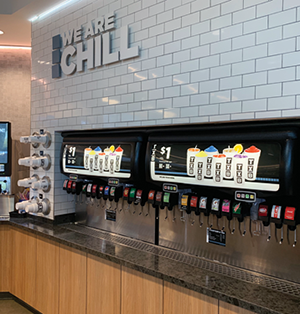 Messages are sent to store managers in the form of “action reports,” which come through on a manager’s smartphone. The approach works in many scenarios, Smartt said, citing the cash register area as another example. Customers are counted when they first enter the store, he explained, and “the system knows to cue the store manager in advance when extra employees will be needed to check customers out because we know that’s going to happen about three minutes after they enter the store.” TXB continues to tweak the system. Smartt already sees the advantage it can bring in labor efficiencies and delivering real-time data to managers.
Messages are sent to store managers in the form of “action reports,” which come through on a manager’s smartphone. The approach works in many scenarios, Smartt said, citing the cash register area as another example. Customers are counted when they first enter the store, he explained, and “the system knows to cue the store manager in advance when extra employees will be needed to check customers out because we know that’s going to happen about three minutes after they enter the store.” TXB continues to tweak the system. Smartt already sees the advantage it can bring in labor efficiencies and delivering real-time data to managers.
Practical Considerations
Four c-store suppliers share insights on ways labor efficiencies have become part of the purchasing consideration for fixtures, equipment, signage and more.
• Craig Neuhoff, vice president of business development at GSP Retail, believes people will continue to think smarter—and with labor in mind—when building new stores. It’s about the precision of systems and task management. “How can we make it as easy as possible to do so many tasks?” he said. Smart approaches he has seen include adding drains in the floor near the fountain area and even in counters themselves for easy spill cleanup. He advises retailers to think about everything from self-cleaning ovens to durability/ease of cleaning when considering floor surfaces. (Editor’s note: Neuhoff passed away shortly after this interview with NACS Magazine. We extend our deepest condolences to his family and many friends.)
• Kent Rollins, division manager for retail display manufacturer Nashville Display, suggests retailers consider functionality first when making purchasing decisions on fixtures. “When the planogram changes, will the fixture need to be modified? Minimal or no hardware changes minimizes labor,” he said. Common mistakes he sees retailers making include not considering the life cycle of the fixture (instead basing the buying decision on looks and cost); forgetting to consider maintenance issues (how easy is it to get a replacement part?); not thinking about shipping and installation particulars (who will assemble it? Will it ship via distribution center?); and not considering cleaning factors (is the fixture easy to keep clean and clean around?).
• Rick Sales, president and founder of digital engagement company Abierto Networks, said that all of the company’s major clients either built new stores or redid stores in a major way last year and have plans for growth this year. “Labor is a big part of the conversation across the board,” he said, adding that it is not the biggest reason c-store operators invest in digital signage programs. The part of the solution he focuses on is driving value through customer engagement. “We work to improve the qual- ity of the stream of communication being fed to customers,” he said. “It’s more value and less work; the information can change frequently.” Instead of putting up traditional window signs, which tend to refresh weekly at best, digital signage programs enable the message to change daily or even multiple times throughout the day (by daypart, for example).
• Craig Weiskerger, director of sales and marketing for Trion Industries Inc., which provides merchandising solutions, said that current limitations on staffing reduce the amount of time avail- able for store personnel to stock and organize shelves. “Store managers need systems that help keep merchandise displays looking fuller and consistently more presentable,” he said, which enables store personnel to spend more time interacting with customers. “It’s an issue every business is facing,” he added. “You don’t want to have your limited staff using labor hours to restock the traditional way when there is a more efficient way to do it.” Increasing the number of facings translates to less restocking, he noted, adding that a system that pushes product forward maximizes presentation and keeps everything looking fully stocked and attractive.